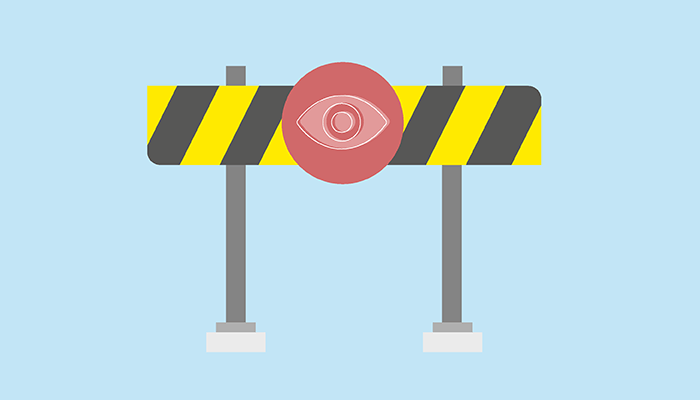
Although we all can agree that everyone should have access to high-quality eye care, such care usually requires state-of-the-art equipment that comes with a high price tag. When it comes to 3D imaging technology, the current gold standard – optical coherence tomography – is no exception, with machines costing between £30,000 and £100,000 (1). These values can price out some ophthalmologists, especially those in resource-limited settings, meaning that they are unable to screen and provide essential diagnoses to their patients. To address this problem, Mario Giardini and his team from the University of Strathclyde developed a new low-cost device to make 3D imaging technology more accessible. Here, Giardini tells us more…
What prompted you to develop this device?
Glaucoma affects millions of people worldwide. Although 3D imaging is a productive tool for glaucoma screening, it is expensive and, for many, unaffordable. My research lab believes that healthcare is a fundamental human right, so our research aims to provide a pathway to healthcare equality and sustainability. As an engineer with a background in photonics, optical instruments, and computer science, I saw an opportunity to provide an affordable technological contribution to glaucoma diagnostics. With the help of funding, I built a team to support this project at the University of Strathclyde’s Brownlie Digital Health Laboratory. Kirsty Jordan, from Strathclyde’s Department of Biomedical Engineering, helped to develop the first prototype; Iain Livingstone, Consultant Ophthalmologist from NHS Forth Valley, provided expert advice and support on clinical aspects; Ian Coghill, also from Strathclyde’s Department of Biomedical Engineering, helped advance the device to its current stage; and Richard Black, former Academic Director of Strathclyde’s EPSRC Centre for Doctoral Training in Medical Devices and Health Technologies, aided in expanding the technology beyond its simple 3D imaging capabilities, providing exciting possibilities for new research in the future.
What’s your elevator pitch for the device?
Three-dimensional imaging is paramount to the diagnosis of critical eye conditions such as glaucoma. Even for general diagnostics, only the richest countries can afford OCT machines; for population screening, they are unsustainable. However, every optometrist in the world has access to a slit lamp biomicroscope. We have created an inexpensive add-on that allows the slit lamp to take 3D images of the back of the eye. This add-on is made up of instruments that are readily available to most optometrists and is therefore a much cheaper and simpler alternative to an OCT system. Our development expands the reach of 3D imaging so that it can become accessible throughout the world.
We have tested our technology in the laboratory and, in collaboration with industrial partners, have begun the process of transforming it into a commercial device. We are also evaluating the possibility of adding further functions to the technology to expand its diagnostic capabilities beyond simple 3D imaging.
What do ophthalmologists need to know about your work?
There are multiple aspects that I feel are relevant to ophthalmologists. The technology can create 3D images of the retina and cornea with a simple add-on to a slit lamp. Subject to successful translation of the technology into a commercial device, this would make 3D imaging of the front and back of the eye routinely and ubiquitously accessible for a wide range of diagnostics including glaucoma, tumors, and deformations of the cornea. More conceptually, the technology extracts information from the video feed captured by a slit lamp. This is part of a more general move toward augmenting conventional diagnostics through sophisticated digital processing of diagnostic images. There are entire fields of ophthalmology in which digital imaging and video streaming sit at the core – for example, teleophthalmology – and we want our technology to become part of this toolbox.
What do you hope the impact of this technology will be?
We foresee potential impacts on three fronts. First, by enabling 3D imaging through a simple and inexpensive add-on to an already ubiquitous diagnostic tool, important diagnostic steps for diseases such as glaucoma can shift from secondary to primary care. Additionally, 3D imaging can become universally accessible, expanding its diagnostic reach to larger populations. Finally, complementing ophthalmology’s adoption of digital imaging and telemedicine, the technology – which is based on a sophisticated form of image analysis – lends itself to mining and augmentation of images and video feeds with 3D information.
What’s the future for this technology – and for ophthalmology in general?
With the support of our Innovation and Industry Engagement Directorate, the technology is now licensed to RetinaScope, an ophthalmology innovation group. We hope to turn it into a medical product family and make it available for clinical use. In terms of research directions, we would like to see this technology become a part of the toolbox that can be deployed to analyze images and videos in the field (for example, during teleophthalmology consultations), providing a new tool for the real-time visualization of structures of the eye. On top of this, we are exploring the possibility of further image processing to extract parameters related to tissue function.
More prospectively, we note that slit lamp biomicroscopes are based on a line of sight between operator and patient through the microscope – but digital technology has eclipsed this concept. Now, the moment we capture a digital image or video from the microscope, we can move that visualization to where it is most convenient for the operator – as well as interpose digital augmentation as needed. There is ample scope for research on mining information from digital imaging and on augmented visualization; this offers avenues to enhancing diagnostics, interventional procedures, and documentation with direct implications at procedure, process, and healthcare system levels.
References
- R Chopra, et al., Eye (Lond), 35, 236 (2021). PMID: 33168975.
